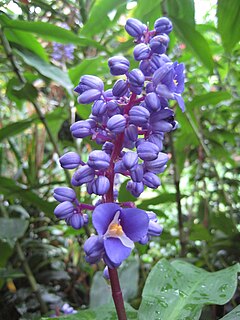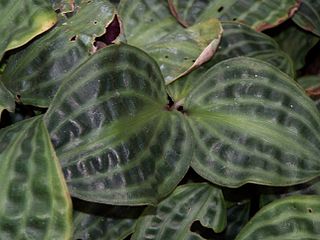
The taxonomy of the Orchidaceae has evolved slowly during the last 250 years, starting with Carl Linnaeus who in 1753 recognized eight genera. De Jussieu recognized the Orchidaceae as a separate family in his Genera Plantarum in 1789. Olof Swartz recognized 25 genera in 1800. Louis Claude Richard provided us in 1817 with the descriptive terminology of the orchids.. The next step was taken in 1830-1840 by John Lindley, who recognized four subfamilies. He is generally recognized as the father of orchid taxonomy. The next important step was taken by George Bentham with a new classification, recognizing subtribes for the first time. This classification was first presented in a paper that Bentham read to the Royal Society in 1881. Then it was published in 1883 in the final volume of Genera Plantarum. The next great contributors were Pfitzer (1887), Schlechter (1926), Mansfeld (1937), Dressler and Dodson (1960), Garay, Vermeulen (1966), again Dressler (1981). and Burns-Balogh and Funk (1986). Dressler's 1993 book had considerable influence on later work.

The Orchidoideae, or the orchidoid orchids, are a subfamily of the orchid family (Orchidaceae).

Commelinaceae is a family of flowering plants. In less formal contexts, the group is referred to as the dayflower family or spiderwort family. It is one of five families in the order Commelinales and by far the largest of these with about 731 known species in 41 genera. Well known genera include Commelina (dayflowers) and Tradescantia (spiderworts). The family is diverse in both the Old World tropics and the New World tropics, with some genera present in both. The variation in morphology, especially that of the flower and inflorescence, is considered to be exceptionally high amongst the angiosperms.

Dichorisandra is a genus of perennial monocotyledonous flowering plants in the dayflower family (Commelinaceae). It is found in the Neotropics. The genus is characterised by its slightly zygomorphic flowers with large anthers usually releasing pollen by means of pores at the apex, as well as by its seeds that are embedded in a red or sometimes white aril, and tubers that often form at the tips of the roots. Both morphology and an analysis of DNA sequences indicate it is very closely related to the genus Siderasis.

Cochliostema is a genus of plants with two species in the family Commelinaceae. The genus occurs from southern Nicaragua to southern Ecuador.
PlowmanianthusFaden & C.R.Hardy is a genus of plants with 5 species and 2 subspecies in the family Commelinaceae. The genus is distributed from Panama to Amazonian Peru and Brazil.

Commelinoideae is a subfamily of monocotyledonous flowering plants in the dayflower family (Commelinaceae). The Commelinoideae is one of two subfamilies within the Commelinaceae and includes 39 genera and all but 12 of the family's several hundred known species. The subfamily is further broken down into two tribes, the Tradescantieae, which includes 26 genera and about 300 species, and the Commelineae, which contains 13 genera and about 350 species.

The Vandeae is a large monophyletic tribe within the family of orchids.

Geogenanthus is a genus of plants with 3 species in the family Commelinaceae. The genus is distributed from Colombia to Amazonian Peru and Brazil. Two of its species are occasionally found in the horticultural trade as houseplants.

Dichorisandrinae is a subtribe within the tribe Tradescantieae of the flowering plant family Commelinaceae. It consists of 5 genera and around 51 species.

Cartonema is a genus of perennial or annual monocotyledonous flowering plants in the dayflower family. It is restricted to Australia and nearby Trangan Island, which is part of Indonesia. It is the earliest diverging member of its family and has a number of traits that are unique within it, such as non-succulent leaves and a lack of raphides. Its distinctive features led to the genus to once be considered part of its own separate family, Cartonemataceae. However, analysis of DNA sequences, as well as many common anatomical characters, has supported its relationship with the Commelinaceae. It contains about 11 species.

Triceratella is a genus of annual monocotyledonous flowering plants in the dayflower family. The genus consists of a single species, Triceratella drummondii. It is known to occur in Zimbabwe and Mozambique, but has only been collected twice. Because of its rarity, DNA sequences have never been used to determine its relatives, but it is believed to be closely related to the early diverging genus Cartonema, with which it shares a number of characters unique for the dayflower family, such as a yellow flowers, glandular hairs, and a lack of glandular microhairs. It differs from Cartonema, however, in having raphides, which all other members of the Commelinaceae have, although they occur in a unique position next to the leaf veins in Triceratella.

Murdannia is a genus of annual or perennial monocotyledonous flowering plants in the dayflower family.

Buforrestia is a genus of perennial monocotyledonous flowering plants in the dayflower family. The genus contains three known species, with two found in West and Central Africa and one in northeastern South America.

Polyspatha is a genus of perennial monocotyledonous flowering plants in the dayflower family. It is restricted to tropical Africa consists of three recognized species.

Coleotrype is a genus of perennial monocotyledonous flowering plants in the dayflower family. It is found in Africa and Madagascar.

Amischotolype is a genus of perennial monocotyledonous flowering plants in the dayflower family. It is found in Central Africa and from India through Southeast Asia to New Guinea, with the great majority or species found in Asia.

Commelineae is a tribe of monocotyledonous flowering plants in the dayflower family (Commelinaceae). The tribe consists of 13 genera and about 350 species. It is one of two tribes in the subfamily Commelinoideae, the other being the Tradescantieae, which is made up of 26 genera and about 300 species. The remaining two genera in the family are in a separate subfamily, the Cartonematoideae.

The taxonomy of Liliaceae has had a complex history since the first description of this flowering plant family in the mid-eighteenth century. Originally, the Liliaceae or Lily family were defined as having a "calix" (perianth) of six equal-coloured parts, six stamens, a single style, and a superior, three-chambered (trilocular) ovary turning into a capsule fruit at maturity. The taxonomic circumscription of the family Liliaceae progressively expanded until it became the largest plant family and also extremely diverse, being somewhat arbitrarily defined as all species of plants with six tepals and a superior ovary. It eventually came to encompass about 300 genera and 4,500 species, and was thus a "catch-all" and hence paraphyletic taxon. Only since the more modern taxonomic systems developed by the Angiosperm Phylogeny Group (APG) and based on phylogenetic principles, has it been possible to identify the many separate taxonomic groupings within the original family and redistribute them, leaving a relatively small core as the modern family Liliaceae, with fifteen genera and 600 species.
















